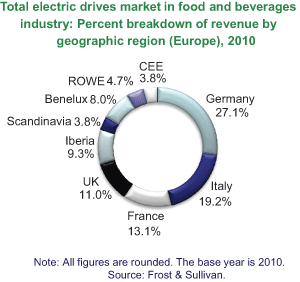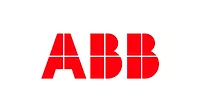TECH FLASH
Energy efficiency drives electric drives in Europe
 In Europe, the food and beverage industry has been a major user of AC electronic drives. Although the economic slowdown has had an effect on slowing the purchase of drives, the cost of energy has heightened the interest for energy-efficient, highly reliable and appropriate product customization, according to a study from Frost & Sullivan.
In Europe, the food and beverage industry has been a major user of AC electronic drives. Although the economic slowdown has had an effect on slowing the purchase of drives, the cost of energy has heightened the interest for energy-efficient, highly reliable and appropriate product customization, according to a study from Frost & Sullivan.
According to the report, Strategic Analysis of Electric Drives Market in the European Food and Beverage Industry, the market, with revenues of 205 million Euros ($269 million) in 2010, is expected to reach 313 million Euros ($411 million) in 2017, producing a compound average growth rate of 6.2 percent over the seven-year period. Electric drives represent almost two-thirds of the energy consumption in the food and beverage industry. Surging energy prices have, however, had a negative impact on the performance of this industry. In this context, energy-efficient drives have helped processors reduce production costs, improve ROI and lower CO2 emissions, according to the study.
“The food and beverage industry is becoming completely automated, resulting in increased power consumption during the production process,” says Frost & Sullivan Research Analyst Raaj Thilak Raveendran. “Companies are also looking to reduce their energy usage by implementing energy-efficient drive technology. Although expensive, energy-efficient drives provide high ROI and reduce operating costs—two advantages that will boost their uptake over the forecast period.”
Another important trend is the growing interest of OEMs in decentralized, rather than centralized, drives due to the reduced cost and project planning time they offer. Electric drive manufacturers are planning to launch new products in this segment, which will boost the sales of decentralized drives in the short and medium terms of the forecast period.
“Ease-of-use and cost efficiency are the two main advantages of electric drives in comparison to rival technologies,” concludes Raveendran. “Due to these advantages, electric drives have been able to find new applications. To sustain market momentum, [drives] manufacturers need to provide a complete range of products that suit the application requirements of both OEMs and end-users.”
For more information: Anna Zanchi, anna.zanchi@frost.com.
Looking for a reprint of this article?
From high-res PDFs to custom plaques, order your copy today!





